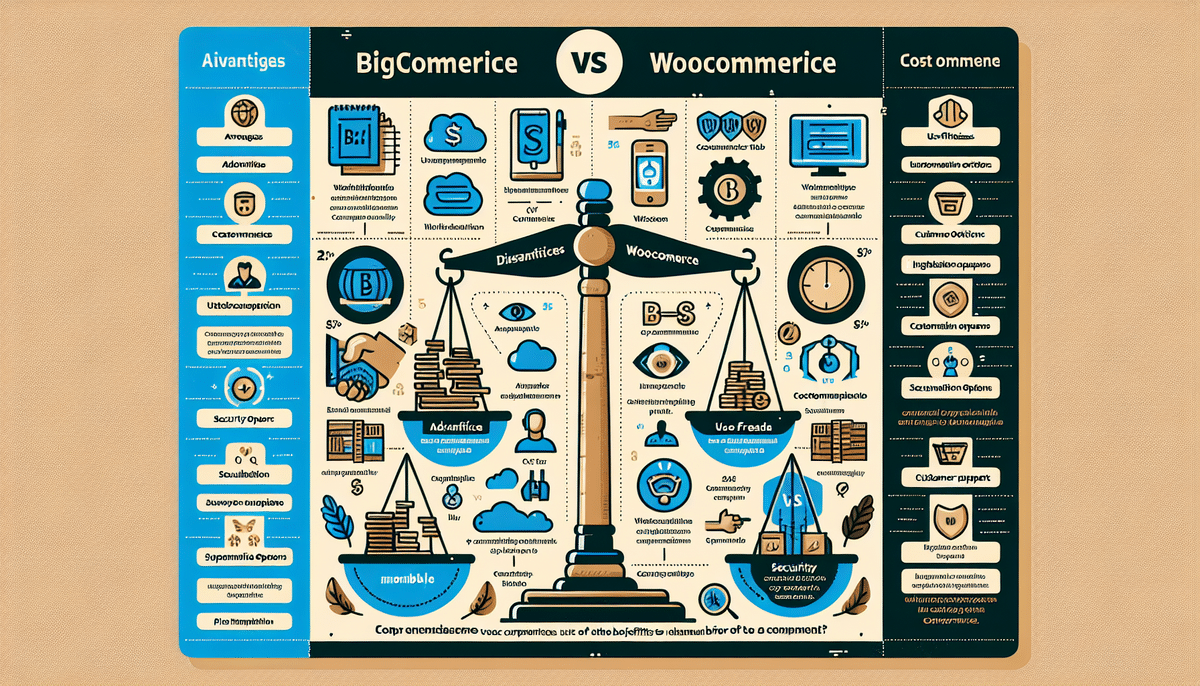Overview of Ecommerce Platforms
The ecommerce landscape is vast and continually evolving, offering a plethora of platforms tailored to diverse business needs. Understanding the variety and capabilities of these platforms is crucial for selecting the one that aligns best with your business objectives.
Most Popular Ecommerce Platforms
Several ecommerce platforms dominate the market, each with unique strengths:
- Shopify: Leading the pack with over 1.75 million businesses worldwide (Shopify Official), Shopify is renowned for its user-friendly interface and robust app ecosystem.
- WooCommerce: An open-source plugin for WordPress, WooCommerce boasts more than 5 million active installations (WooCommerce Official), making it a favorite among small to medium-sized businesses seeking flexibility.
- BigCommerce: Catering to both small businesses and large enterprises, BigCommerce offers scalable solutions with extensive built-in features (BigCommerce Official).
- Magento (Adobe Commerce): A powerful open-source platform now under Adobe, Magento provides high customization capabilities suitable for complex and large-scale businesses (Magento Official).
- Volusion: Known for its ease of use and comprehensive support, Volusion serves a wide range of ecommerce businesses (Volusion Official).
Additionally, regional platforms like Alibaba's Tmall and JD.com dominate in Asia, while niche platforms such as Farfetch and Net-a-Porter are preferred in the fashion industry.
Open-Source vs. Proprietary Ecommerce Platforms
Choosing between open-source and proprietary ecommerce platforms depends on your business needs and technical capabilities:
- Open-Source Platforms: Offer high flexibility and customization since the source code is accessible. Examples include WooCommerce and Magento. However, they require technical expertise for setup and maintenance.
- Proprietary Platforms: These platforms, such as Shopify and BigCommerce, provide ease of use with managed hosting and support. They may offer less customization but are ideal for businesses without extensive technical resources.
Consider the level of control, customization, cost, and support when deciding between open-source and proprietary solutions.
Choosing the Right Ecommerce Platform
Selecting the appropriate ecommerce platform is pivotal for your online business's success. Several factors influence this decision:
Factors to Consider
- Business Size and Growth: Ensure the platform can scale with your business.
- Budget: Evaluate initial costs, transaction fees, and ongoing expenses.
- Product Range: Assess if the platform accommodates the number and types of products you offer.
- Customization Needs: Determine the level of design and functionality customization required.
- Support and Community: Reliable support and a strong user community can be invaluable.
Evaluating Features and Pricing
When comparing platforms, focus on:
- Transaction Fees: Some platforms charge fees per transaction, which can impact profitability.
- Pricing Plans: Understand what each plan offers and choose one that aligns with your needs.
- Payment Gateways: Ensure the platform supports your preferred payment methods.
- Supported Currencies: Critical for international businesses.
- Add-Ons and Integrations: Additional features can enhance functionality but may come at extra costs.
For example, Shopify offers various pricing tiers starting from $39/month, while WooCommerce is free but may incur costs for hosting and extensions.
Security and Scalability
Security is paramount in protecting customer data and maintaining trust. Look for platforms that offer:
- SSL Encryption
- Two-Factor Authentication
- Regular Security Updates
Scalability ensures that the platform can handle increased traffic and sales as your business grows. Features like cloud-based hosting and easy integration with other tools are beneficial for scalability.
Setting Up and Optimizing Your Ecommerce Store
Establishing a successful ecommerce store involves several key steps, from setup to ongoing optimization.
Beginner's Guide to Setting Up
- Choose a Plan: Select a pricing plan that fits your budget and needs.
- Select a Domain Name: Choose a memorable and relevant domain for your store.
- Customize Your Theme: Personalize the design to reflect your brand identity.
- Set Up Payment Gateway: Integrate reliable payment methods for smooth transactions.
- Add Your Products: Upload product listings with detailed descriptions and high-quality images.
Most platforms provide step-by-step tutorials and support to facilitate the setup process.
SEO Best Practices
Optimizing your store for search engines can significantly increase visibility and traffic:
- Keyword Optimization: Incorporate relevant keywords in product titles, descriptions, and meta tags.
- Mobile-Friendly Design: Ensure your website is responsive and performs well on mobile devices.
- Fast Loading Speed: Optimize images and use efficient coding practices to reduce load times.
- Content Marketing: Implement a blog or resource section to regularly publish valuable content.
- High-Quality Backlinks: Build backlinks from reputable websites to enhance domain authority.
According to Search Engine Journal, websites with strong SEO strategies can achieve significantly higher search rankings and organic traffic.
Leveraging Third-Party Integrations
Enhance your store's functionality with third-party integrations:
- Shipping and Fulfillment Services: Streamline order processing and delivery.
- Accounting Software: Simplify financial management with integrations like QuickBooks or Xero.
- Email Marketing Tools: Engage customers through platforms like Mailchimp or Klaviyo.
- Social Media Platforms: Integrate with Facebook, Instagram, and other social channels for broader reach.
Ensure that the integrations you choose are compatible with your ecommerce platform and offer the necessary features to support your business operations.
Managing and Growing Your Ecommerce Business
Analytics and Measuring Success
Utilize analytics tools to monitor your store's performance and inform decision-making:
- Traffic Metrics: Track the number of visitors and their sources.
- Conversion Rates: Measure the percentage of visitors who make a purchase.
- Bounce Rates: Analyze the percentage of visitors who leave without interacting.
- Average Order Value (AOV): Monitor the average spending per customer.
Tools like Google Analytics provide comprehensive insights into customer behavior, enabling you to optimize marketing strategies and improve user experience.
Migrating Between Platforms
If your current platform no longer meets your business needs, migrating to a new platform can be a strategic move:
- Plan Ahead: Outline your migration strategy and timeline.
- Set Up a Test Environment: Test the new platform without affecting your live store.
- Export Your Data: Safely transfer your product listings, customer data, and orders.
- Select a New Platform: Choose a platform that better aligns with your current and future needs.
- Test Thoroughly: Ensure all features and integrations work seamlessly before going live.
Minimal downtime and careful planning are essential to ensure a smooth transition without disrupting customer experience.
Future Trends in Ecommerce Platforms
The ecommerce industry is poised for significant advancements driven by technological innovations and changing consumer behaviors:
- Mobile Commerce Growth: With increasing smartphone usage, mobile-optimized stores are becoming essential.
- Artificial Intelligence and Machine Learning: AI-driven personalization and chatbots enhance customer engagement and support.
- Social Commerce Expansion: Integration with social media platforms enables direct shopping experiences.
- Omnichannel Retailing: Seamless integration across online and offline channels provides a unified customer experience.
- Voice Commerce: Voice-activated shopping is emerging as a convenient option for consumers.
Staying abreast of these trends can help businesses adapt and remain competitive in the evolving ecommerce landscape.
Conclusion
Choosing the right ecommerce platform is a foundational step in building a successful online business. By understanding the various platforms available, evaluating your specific business needs, and implementing best practices for setup and optimization, you can create a robust and scalable online store. Additionally, staying informed about industry trends and leveraging analytics will empower you to make data-driven decisions, ensuring sustained growth and success in the competitive ecommerce market.






















